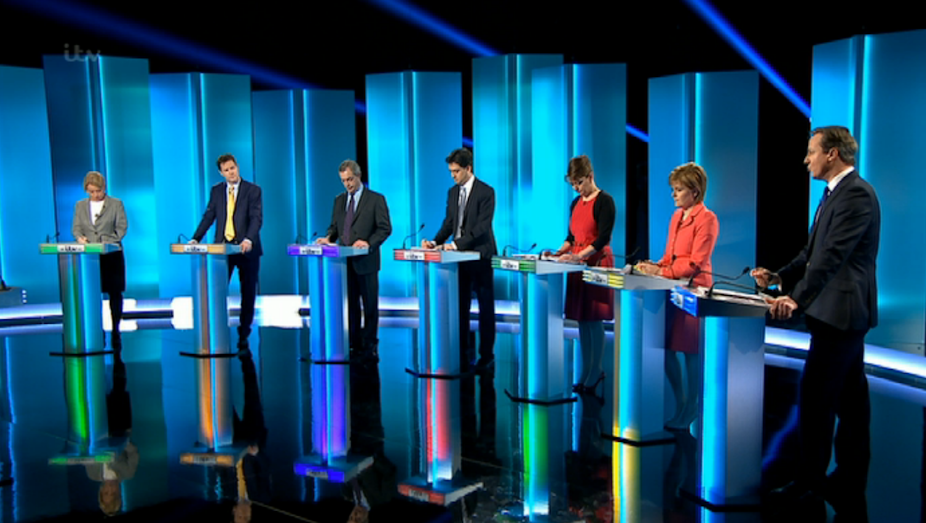The leadership debate screened on ITV on April 2 marked a historic moment in British politics. While 2010 brought the British public the first ever televised debates, the 2015 version saw seven leaders take to the stage together for the first time.
Before, during and after the debate, much of the social media and pundit reaction reflected an obsession with the messiness of the multi-party set-up. Before the broadcast, the most popular Twitter hashtag was #massdebate, trending over ITV’s chosen #leadersdebate. The double entendre provided much hilarity for users.
Others compared the format to a game show. One tweeter complained that “The Weakest Link Celebrity Specials have really gone downhill”.
Even seasoned observers of British politics struggled to come to terms with the decision to include the smaller parties. After the broadcast, Stuart Heritage, commenting in the Guardian described it as a “long, slow, claustrophobic mess that nobody could win.”
Most media coverage sought to frame the debate in terms of the contest between Miliband and Cameron. The BBC, which has long struggled to overcome a narrow understanding of impartiality in terms of conflict between the Conservative and Labour parties, missed an opportunity in the News at 10. Here, deputy political editor James Landale focused on the clash between the two party leaders, describing it as “the only chance for David Cameron and Ed Miliband to debate openly”.
When multi-party debates are the norm
Between complaints about the messiness and an obsessive focus on two of the leaders, something important has been missed. This was an exciting moment in British politics. For once, the British public has heard a diversity of voices before polling day. For two hours, the election campaign became more than just a horse race between the two favourites.

In many European democracies, this type of debate is the norm. In the recent Dutch elections, twelve parties were included in a series of mini-debates, each featuring two leaders going head to head.
In German elections, the two main party leaders debate one-on-one but any party with representatives in the Bundestag is also invited to participate in a second debate so sprawling it was originally called the Elephant Round.
In Canada, the Bloc Québécois is included in debates broadcast across the country, despite the fact that the party only has candidates standing for election in Québec.
Breath of fresh air
The UK debate may have been messy and difficult to read in terms of winners and losers but it told voters much about the actual policies of each party. To avoid descending into farce, it was necessary to adhere to a strict programme of questions on the biggest issues of the campaign – the NHS, immigration, the economy and social inequality.
It signalled the change towards a more diverse landscape in British politics. It is a shift that could energise citizens who are fed up with the two-party model that has prevailed for so long.

A real range of views and voices were represented in the debates. The inclusion of the SNP and Plaid Cymru, fielding candidates only in Scotland and Wales, played out with their leaders placing their answers in their national contexts, rather than speaking to the audience as a whole.
But the three women leaders – Natalie Bennett for the Greens, Nicola Sturgeon for the SNP and Leanne Wood for Plaid Cymru – also took on the main party leaders in direct and often progressive attacks. They challenged them on their past records and suggested that voters could no longer trust their pre-election promises.
The first-past-the-post electoral system continues to privilege the large parties but there is growing clamour for a more inclusive form of representation. The seven-way debate may have been difficult to digest at first, but it has ultimately shown how this can be done.

